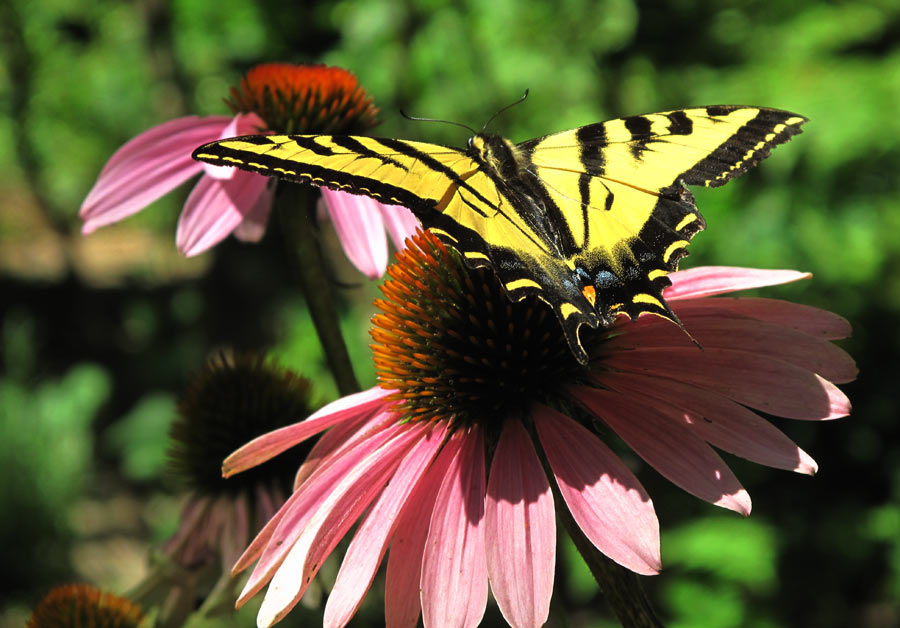
“The monarch is an iconic American insect that holds an important place in the ecological chain.
It has suffered a huge decline and warrants protection.”
– David James, WSU entomologist.
“The Monarch butterfly population in 2014 was the lowest it has ever been recorded in the last two decades.” from the Southern Oregon Monarch Advocates website.
You can help by creating a garden that includes Milkweed, nectar plants and some of the features you will find in our Monarch Butterfly Garden. See the lists below. Simply planting a patch of native Milkweed will go a long way toward helping restore the Monarch population. Check with Greenleaf Nursery in Grants Pass, in late spring, and Shooting Star Nursery in Central Point.
Look for these Special Features in the Monarch Butterfly Garden:
Existing Tree (Crepe Myrtle)
Butterfly Sunning Rock
Nectar Plants
Host Plants: Milkweed (Monarch)

Plants in the Monarch Butterfly Garden bed:
Showy Milkweed
Narrowleaf Milkweed
Ocean spray
Blueblossom or Wild Lilac (Ceonothus)
Blue Beard – (Caryopteris)
Aster (dwarf)
Garlic Chives
Echinacea
Autumn Sedum

Here is a list of plants that are known to attract pollinators, along with the butterflies and pollinators they attract, adapted from a list provided by Gail Langellotto, associate professor of horticulture at Oregon State University. You will find all these plants somewhere in the FireWise Demonstration Garden Project.
Native Milkweeds
Showy milkweed (Asclepias speciosa): Attracts monarch butterflies because they lay their eggs on showy milkweed and collect nectar and pollen from it. Hummingbirds and many pollinator insects are also drawn this plant.

Narrow-leaf Milkweed (Asclepias fascicularis): Narrow-leaved milkweed is an important host plant for monarch, swallowtail, and striated queen butterflies, as well as many native pollinators including beetles, wasps and bees.

Blueblossom (Ceanothus thyrsiflorus): Larval host for pale swallowtail, California tortoiseshell and echo blue butterflies. Attracts bumblebees, carpenter bees, honeybees, digger bees and a variety of small native bees.
Ocean spray (Holodiscus discolor): Larval host for spring azure, brown elfin and Lorquin’s admiral butterflies. Bumblebees and a variety of small native bees are attracted to ocean spray.
Serviceberry (Amelanchier alnifolia): Larval host for Weiddemeyer’s admiral butterflies. Draws hummingbirds, bees and butterflies.
Red-flowering currant (Ribes sanguineum): Draws early-season butterflies and hummingbirds.
Salal (Gaultheria shallon): Larval host for spring azure butterflies. Attracts various types of bees.

Non-native Nectar Plants:
Coneflower (Echinacea) honeybees, butterflies
Garlic Chives (Allium) honeybees, butterflies
Catmint (Nepeta): Also draws honeybees, bumblebees, carder bees and mason bees.
Lavender: Attracts bumblebees, carpenter bees, digger bees and large and small leafcutting bees.
Russian sage (Perovskia atriplicifolia): Entices honeybees, small carpenter bees leafcutting bees, and hummingbirds.
Zinnias: Attract many different types of hummingbirds, butterflies and bees.
These plants are spread throughout the five garden beds.

